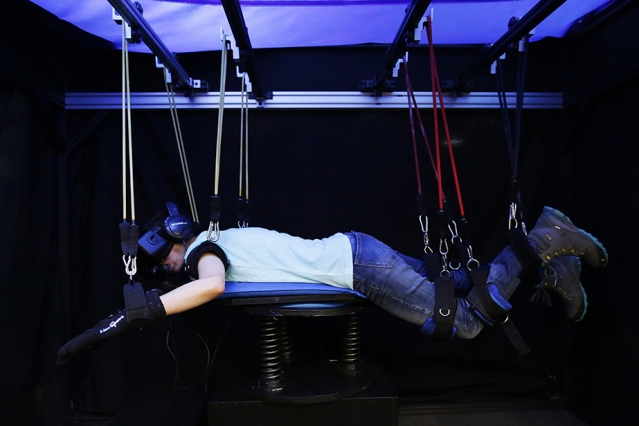MIT researchers create virtual scuba diving experience
Dhruv Jain, a master of science candidate in the MIT Media Lab’s Living Mobile Group, created a SCUBA diving simulator called Amphibian in order to help disabled people feel more liberated from their impairment.
Jain opted for the underwater experience since that is the way he related to freedom.
“Underwater, our vital senses are dulled and warped. Visual range is limited and magnification is distorted. The senses of smell, taste and touch are severely muted. Hearing is distorted too, since sound travels five times faster in the water,”said Jain. “But in these conditions, I experienced the kind of peace one can only expect to feel with the freedom of weightlessness. Having done 54 dives in the last 10 months, I can call myself a good diver now. And yet every time I dive, I find the underwater experience to be rejuvenating; it is emotional and almost spiritual.”

Amphibian allows users to immerse themselves in the underwater world by providing an immersive SCUBA diving experience in a water-free simulator.
Jain didn’t invent an underwater, SCUBA diving simulator — plenty of those exist, but typically they are limited to sight and sound conditions. Instead, Amphibian engages additional physical experiences like temperature, balance, and spacial orientation.
To experience the VR underwater world, users can lie on their stomach’s while positioning their arms in a swimming form, suspended in mid-air. The system works in conjunction with an Oculus Rift head-mounted display and headphones, which allow them to see and hear the environment around them.
Jain and his fellow team members equipped Amphibian with sensors used to simulate buoyancy, drag, and temperature. For example, Peltier modules are attached to a user’s wrists and with the help of motion-tracking gloves simulates temperature changes as they dive deeper into the water. There’s also an inflatable airbag placed under the participant’s torso which allows them to rise up and down by breathing, with the help of gas sensors attached to a snorkel.
All of the sensor data is relayed to a processing unit that converts the physical motions in the Oculus app. It even allows for interaction between users and the underwater environment. So someone can actually reach out and touch a fish.
According to Jain, who is also partially dead “People have a negative view of blindness or deafness, thinking that they would find it too difficult to navigate in the world, but my goal was to make people realize that disability is also liberating. When I turn off my hearing aid and close my eyes, I go into a deep meditative state.
“Being underwater is so freeing, I thought through diving I could make people better understand the effect of disabilities,” he added.
Story via MIT.

Comments are closed, but trackbacks and pingbacks are open.